BMW iX3 Review 2025
BMW iX3 At A Glance
Few cars are as significant for their manufacturers as the all-new BMW iX3 is for the premium German car brand. Most obviously, it heralds a bold new design language that sets a blueprint for how BMWs will look over the next decade or more, while beneath its SUV bodywork nestles cutting-edge battery technology that enables a potential driving range of up to 500 miles — the longest of any EV on sale.
BMW calls the new iX3’s fresh styling theme Neue Klasse — new class to English speakers — paying homage to the brand’s reimagination of the same name back in the 1960s. That’s about the only aspect of this electric SUV that’s retrospective because everything else is designed to be of the moment, without being overtly divisive or glitzy.
In fact, there’s such a restraint to the way the iX3 looks both outside and in, as to feel unlike a BMW of the past 20 years and more like those models wearing the blue and white roundel from before then when elegance was a watchword. An antidote to gaucheness if ever there was one.
It will sell alongside the still-young fourth-generation BMW X3 family SUV for the foreseeable, although given the radical appearance of the iX3 we can’t help but wonder how swiftly demand for its combustion-engined sibling might tail-off.
Unlike the previous-generation BMW iX3 which was an EV version of the contemporary petrol- and diesel-fuelled X3, this Mk2 version rides all-new, electric-car specific underpinnings with a different method for packaging the battery’s cells to enable them to store energy more densely.
That the firm has showcased the neue-Neue Klasse template with an SUV shouldn’t be a surprise given the popularity of these high-rise models shows no signs of abating, as well as offering battery packaging advantages over low-slung cars. Yet, less tall models with a similar look will follow along in short order as 2026 will see the debut of the new BMW i3 Saloon, essentially the electric version of today's BMW 3 Series' replacement.
We won’t indulge too long in describing what you can see for yourself in the photos of the new BMW iX3, save to highlight how refreshingly unadorned its bodywork is, amplified by the smooth glazing linking the headlights to a modest reinterpretation of the marque’s famous double-kidney grille. It’s instantly recognisable as a BMW without looking like any model from its back catalogue.
That brand recognition’s vitally important for car companies, especially in more expensive price brackets where there are intangibles such as status and image projection that are part and parcel of the ownership experience. If a passer-by who knows little about cars doesn’t recognise the new iX3 as a BMW then it may as well wear any badge.
For rival manufacturers there’s a real possibility that the latest BMW iX3 could dramatically dilute their collective wares’ appeal — stylistically as well as in technological terms. Take the Audi Q6 e-tron which only has subtle design differences to separate it from the rest of the brand’s faux-by-fours, while the Mercedes EQE SUV’s amorphous shape must surely be a factor behind its lacklustre sales.
Note that the EQE SUV’s larger than the iX3 with a more direct alternative set to appear imminently in the guise of the Mercedes GLC with EQ Technology. That goes on sale in 2026 as does another rival with a name that trips off the tongue with greater ease, the forthcoming — and not-yet-revealed — Volvo EX60.
Less obvious rivals to the BMW include the recently updated Genesis Electrified GV70 as well as the Maserati Grecale Folgore.
Core to the BMW iX3 are four supercomputers that dictate its performance, its semi-autonomous driving functionality, the on-board multimedia suite and all other functions that require electronic operation.
It’s reassuring that engaging handling characteristics are said to be central to how the iX3 behaves on the road — we will assess the success of BMW’s engineers efforts of that in due course while glossing over the fact that’s managed by a computer called Heart of Joy.
An insight into how effective the technology could be is revealed by BMW’s claim that up to 98% of the iX3’s braking activity could be performed by energy recuperation alone. Such a statistic infers both genuine one-pedal driving in a manner no EV has yet come close to and massively long lifespans for consumables such as brake pads and discs.
From launch the latest BMW iX3 is only available in one drive system combination badged 50 xDrive. What this means hardware-wise is a pair of electric motors providing all-wheel drive traction using a single-speed automatic transmission. Total outputs are quoted at 469PS and 645Nm of torque.
Self-evidently not short of grunt, that’s sufficient for a 0-62mph benchmark of 4.9 seconds in a five-seater family car that weighs 2285kg. Somewhat sensibly, the top speed has been electronically pegged at 130mph. Less powerful versions of the iX3 will follow in due course.
And yes, you read that earlier range figure correctly before — five hundred miles on a single charge. The obvious caveat to shine a spotlight on is that while measured to WLTP Combined cycle standards, that figure’s yet to be homologated, so the impressive range figure for the BMW iX3 may well alter slightly in either direction.
It’s also the best-case scenario — high-specification versions loaded with optional extras and driven in full-fat performance mode reduce the tally to 421 miles. Still eye-wideningly good, still provisional.
How is it so high for what’s hardly an immodestly proportioned family SUV? Wind-cheating aerodynamics, clever battery chemistry and that computerised wizardry eking-out every last zap of energy efficiency.
Located beneath the iX3’s floor, its 108.7kWh useable capacity battery can optionally be recharged at 22kW AC, with 11kW AC as standard. No UK home-typical 7.4kW AC recharge times are quoted as yet, but BMW indicates that a flat-to-full recharge at 11kW takes 11 hours — expect the same using a 7.4kW domestic wallbox to take closer to 15 hours.
Using an ultra-rapid public charger will prove fast, if expensive, thanks to the BMW iX3’s DC on-board charger’s ability to manage a 400kW flow rate. Find a device capable of feeding the car electricity at that rate and a 10-80% top up will take just 21 minutes. BMW helpfully points out that plugging in for 10 minutes could potentially add 231 miles of range.
It’s also bidirectional allowing other electric devices to be powered using a Vehicle-to-Load (V2L) adaptor plugged into the iX3’s charge port at a rate of 3.7kW or for properties so equipped, a Vehicle-to-Home (V2H) connection at 11kW.
As radical as the BMW iX3’s exterior is, it’s barely a taster for the wholescale changes visible inside the car. Central to everything is BMW’s new Panoramic iDrive system which ditches the rotary knob in the centre console in favour of what appear to be haptic controls on the steering wheel, reducing the need for the driver’s hands to be away from it. Thumb-sized notches carved out of the rim are said to aid the controls’ operation.
Displaying the iX3’s primary information is a slender screen arrangement stretching the full-width of the dashboard where it meets the windscreen. While one might expect this to negate the need for a head-up display, such a system remains available augmented by 3D graphics.
A small number of physical buttons can be found dotted around the cabin, but not for the climate control settings. Instead, they’re located along the lower section the central multimedia touchscreen — not idea, but at least they’re always visible.
In traditional BMW style, the touchscreen is angled towards the driver for greater ease of use and can be customised to enable personalised icon placement. Other manufacturers take note here: the iX3’s screen is an irregular shape — a left-leaning hexagon — yet its display area faithfully follows the hardware’s border rather than a cheaper rectangular screen with random redundant areas surrounding it. We hope that UK market iX3s feature screens that are angled the opposite way around.
Despite the tech-fest, BMW hasn’t lost sight of the iX3’s requirement to be comfortable conveyance for up to five adults and their luggage. With the rear seats in place its boot has 520 litres of space available — fold the 40/20/40-split seatbacks over and that extends to 1750 litres. They don’t lie completely horizontally in this configuration but there’s no step from the boot floor height. Under the bonnet is a further 58 litres of stowage space.
Available to order from September 2025 the three-model line-up costs from £58,755 for the entry-level BMW iX3 50 xDrive. Next up is the M Sport specification for £61,255 with the flagship M Sport Pro model weighing in at £62,755. Expensive? Yes, but even the dearest costs less than the cheapest version of the old iX3 did when it went off sale. Customer delivers for UK customers are set to commence from March 2026.
Keep this page bookmarked to read our comprehensive full BMW iX3 review in the weeks ahead.


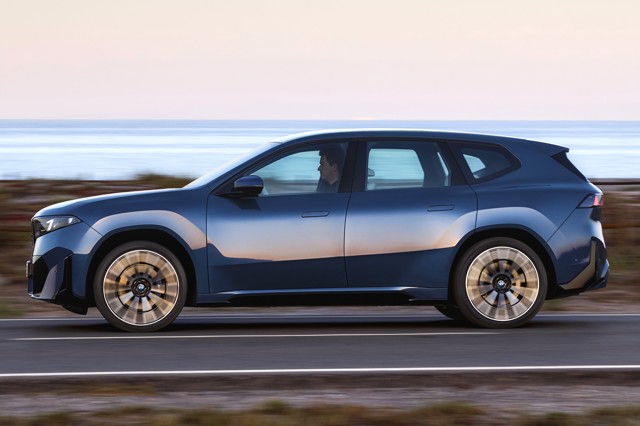

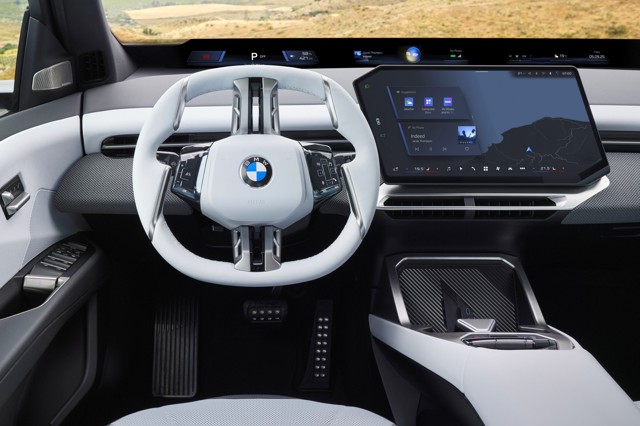
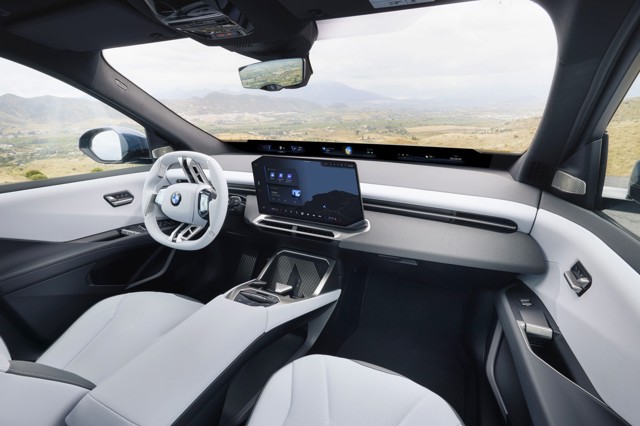
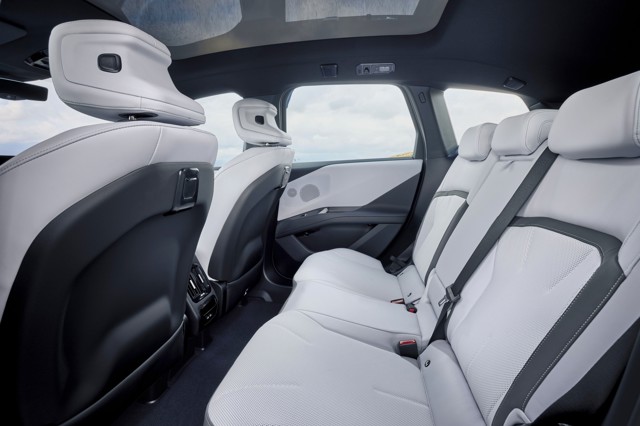
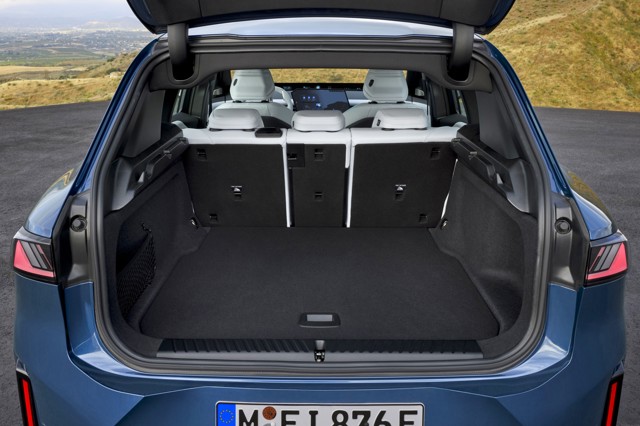
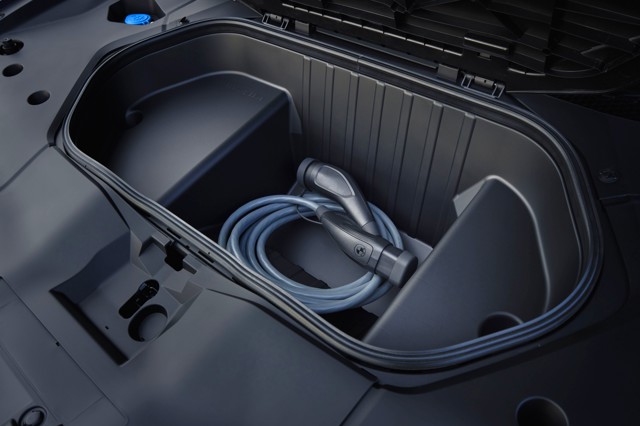

 New-era BMW is a technological showcase. Extraordinarily long driving ranges. Should prove very capable as upmarket family transport. Costs less than the old iX3.
New-era BMW is a technological showcase. Extraordinarily long driving ranges. Should prove very capable as upmarket family transport. Costs less than the old iX3.
 Deletion of the much-admired iDrive controller and a lack of physical buttons raise concerns. Could the tech make it less involving to drive than is expected of a BMW?
Deletion of the much-admired iDrive controller and a lack of physical buttons raise concerns. Could the tech make it less involving to drive than is expected of a BMW?




